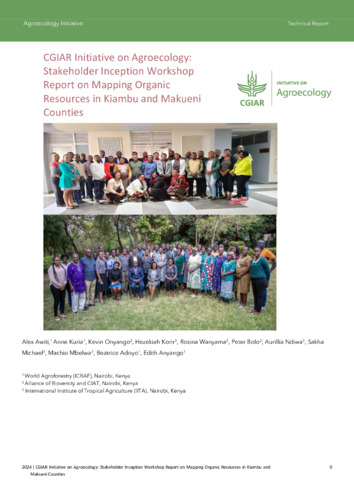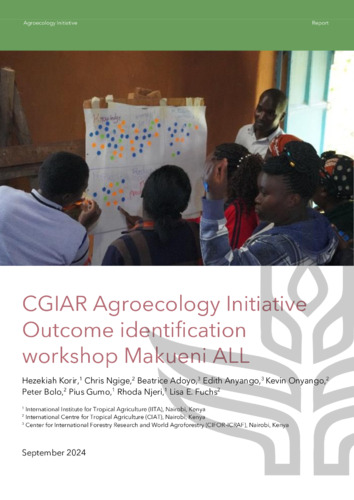Organic resources are a critical entry point for fostering agroecological transitions. They contribute to soil health, nutrient cycling, and biodiversity conservation, enhancing agricultural sustainability and resilience. Three primary sources are animal manure, crop residues, and purpose-produced organic resources from agroforestry. A systematic mapping initiative focused on these sources holds immense potential to facilitate informed decision-making, optimize resource utilization, and promote the adoption of agroecological practices across the Kenya ALLs. We propose systematically mapping organic resources within agricultural landscapes, emphasizing animal manure, crop residues, and purpose-produced organic resources from agroforestry. Following the submission of 2024 workplan and budget (AWPB) for the Agroecology Initiative project, the project received additional funding to map organic resources in Kiambu and Makueni. The ‘Mapping of organic resources for agroecological transition in Kenya agroecological living landscapes aimed to: i) identify and quantify the spatial distribution of organic resources derived from animal manure, crop residues, urban and municipal waste and purpose-produced agroforestry resources within agricultural landscapes; ii) co-develop innovative business models and value chains to facilitate value addition and scaling of access to organic resources by smallholder farmers, considering factors such as resource aggregation, distribution, and market linkages as well as identifying relevant policy levers and advocacy approaches to promote the use of organic resources to accelerate agroecological transition in smallholder farmers.


















